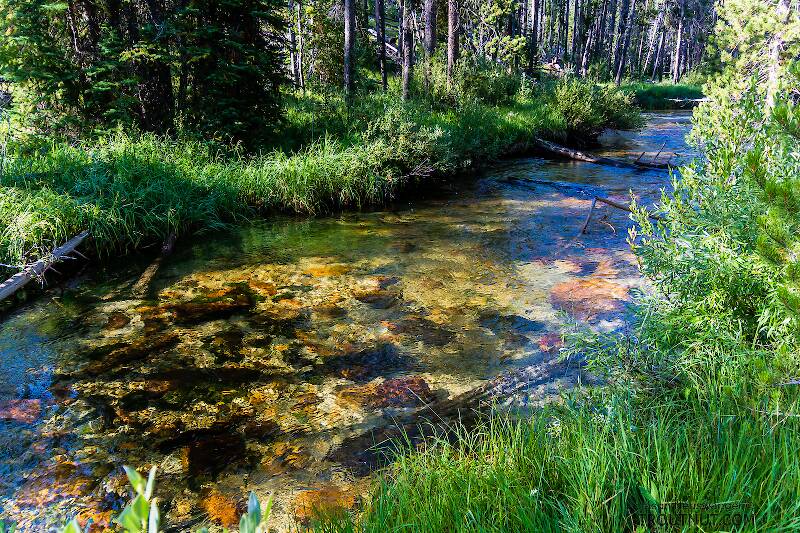
Hex Mayflies
Hexagenia limbata
The famous nocturnal Hex hatch of the Midwest (and a few other lucky locations) stirs to the surface mythically large brown trout that only touch streamers for the rest of the year.

Mayfly Species Procloeon ingens (Tiny Sulphur Duns)
Species Range
Physical description
Most physical descriptions on Troutnut are direct or slightly edited quotes from the original scientific sources describing or updating the species, although there may be errors in copying them to this website. Such descriptions aren't always definitive, because species often turn out to be more variable than the original describers observed. In some cases, only a single specimen was described! However, they are useful starting points.
Male Spinner
Wing length: 9 mm
Abdominal tergites 2-6 of male imago dull olive brown, posterior margins narrowly black.
Head smoky, with ruddy tinges. Basal joints of antennae dusky. Turbinate eyes shriveled, discolored, in dried specimen, forming lunate lateral discs. Thorax shiny blackish; sutures tinged with ruddy brown; heavily shaded laterally with pale brown. Legs smoky brown. Wings hyaline. Abdominal tergites 2-6 semi-hyaline, dull olive brown, the posterior margins faintly blackish. Tergites 7-10 chocolate brown. Sternites dirty whitish; posterior ones opaque and shaded slightly with brown. The spiracular area is marked with black. Tails and forceps whitish; tails tinged at base with ruddy. Plate between bases of forceps limbs somewhat dome-shaped (see fig. 168).
This species may be distinguished from the alliedC. implicatum (now a synonym of Procloeon ingens) by the smoky brown legs and the darker coloration of the body.
Described as C. implicatum
Body length 8? mm, wing length 9? mm
Abdominal tergites 2-6 of male imago pale olive brown, with lateral ruddy shading; segmental incisures pale yellowish.
Turbinate eyes olive green in living insect; deep olive brown in dried specimen. Thorax dark blackish brown; sutures on the posterior portion of the mesonotum marked with ruddy brown. Pleura below the wings shaded with reddish and pale yellow. Sternum brown, paler than the notum. Legs pale yellowish; fore femur shaded with smoky; fore tibia smoky on the basal third, and with a smoky longitudinal dash before the apex, the joint dusky; hind tibiae slightly dusky at base. Wings hyaline. Abdominal tergites 2-7 pale olive brown, semi-hyaline, shaded laterally with ruddy, and on tergites 6 and 7 with ruddy dorsal shading also; segmental incisures pale yellowish. Tergites 8-10 bright ruddy brown. Sternites pale yellowish. A fine broken black line marks the spiracular area.
This species may be separated from C. ingens (now a synonym of Procloeon ingens), which is closely allied to it, by the paler and redder coloration of the body.
Start a Discussion of Procloeon ingens
References
- Caucci, Al and Nastasi, Bob. 2004. Hatches II. The Lyons Press.
- Knopp, Malcolm and Robert Cormier. 1997. Mayflies: An Angler's Study of Trout Water Ephemeroptera . The Lyons Press.
- Needham, James G., Jay R. Traver, and Yin-Chi Hsu. 1935. The Biology of Mayflies. Comstock Publishing Company, Inc.
Mayfly Species Procloeon ingens (Tiny Sulphur Duns)
Species Range
Common Name
Resources
- NatureServe
- Integrated Taxonomic Information System
- Global Biodiversity Information Facility
- Described by McDunnough (1923)


